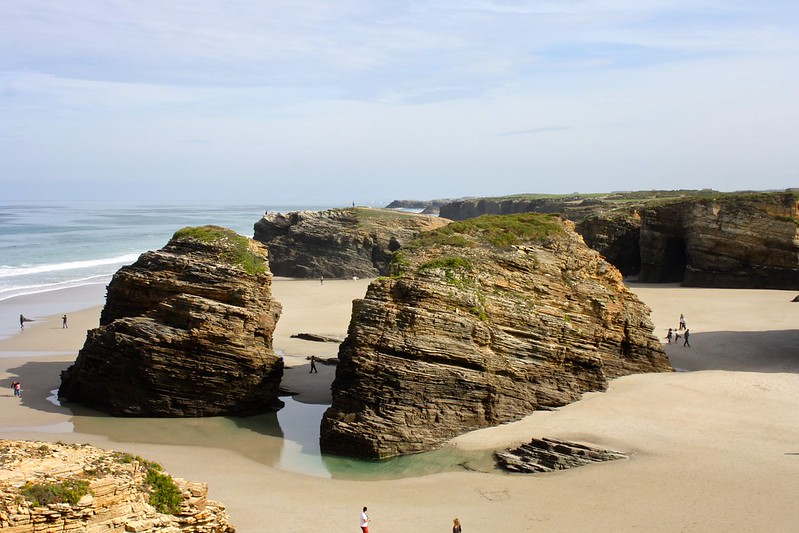Praia das Catedrais: Galicia’s “Cathedrals Beach”
 |
| Weathered rock formations |
Spain’s northwestern region of Galicia is known for its medieval pilgrimage to Santiago de Compostela, its seafood, and its (often never-ending) rain. In contrast to other parts of the country mostly made up of endless fields of grain and olive groves, green Galicia is home to several natural wonders, including the Cíes Islands off the coast of Vigo, the Sil Canyon outside of Ourense, and, perhaps most famous of all, the Praia das Catedrais along the northern coast of Lugo province.
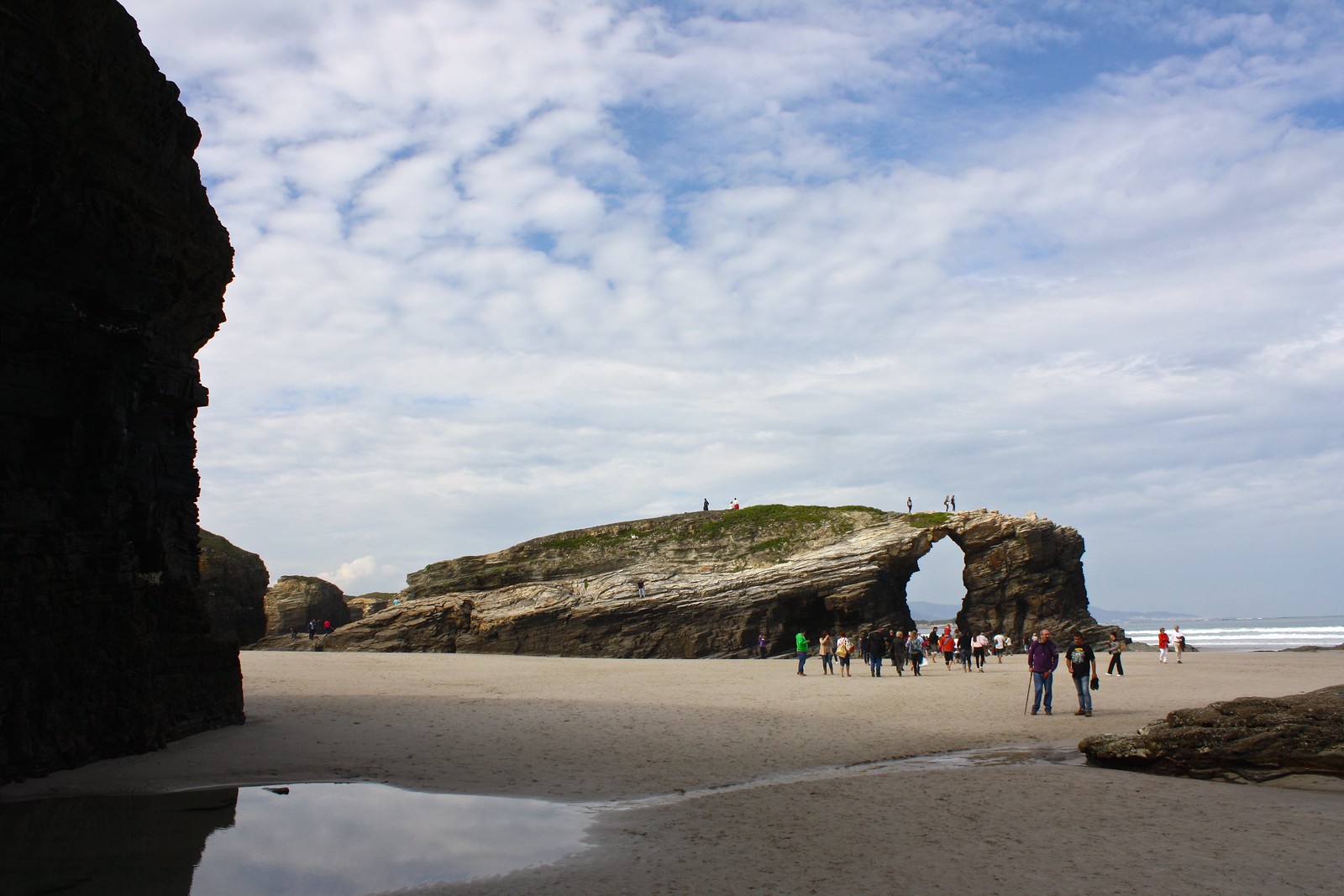 |
| Exploring the beaches |
In Galician, it’s literally called the “Cathedrals Beach” because of the weathered rock formations that happen to look like the flying buttresses of a Gothic cathedral jutting out into the ocean. Going along with this theme, the official name for this beautiful beach is actually Praia das Augas Santas—the Holy Waters Beach. Whatever you want to call this wondrous stretch of coastline, the Praia das Catedrais makes a great daytrip from Roman-walled Lugo…as long as you can get here during low tide!
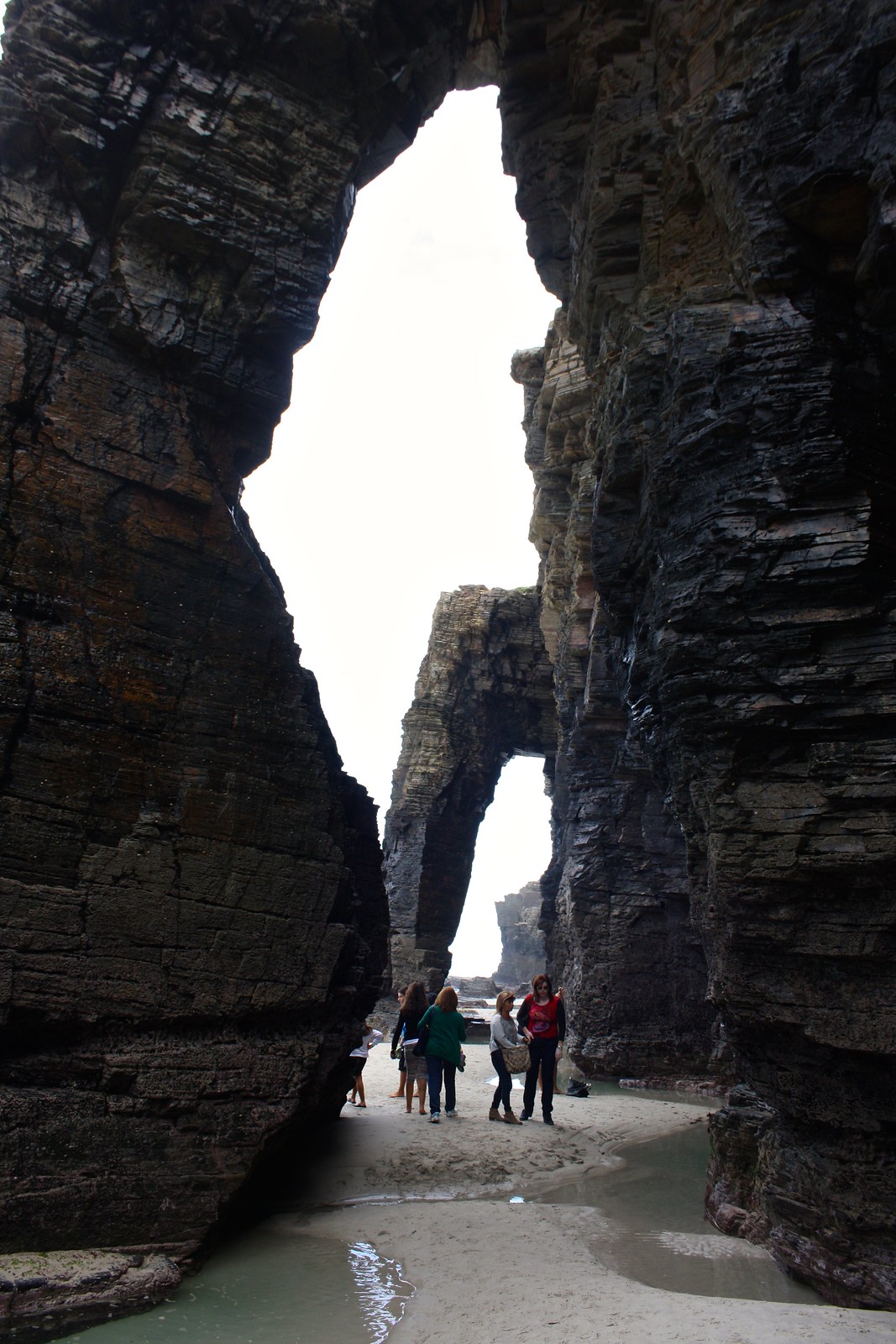 |
| Flying buttresses |
When I visited this beach, the views were really pretty from the lookout point by the parking lot, but I got a completely different perspective at sea level when my friends and I wandered around on the soggy sand and wound in and around the worn-away cliffs. Swirling tide pools, brooding caverns, and natural bridges all presented themselves to us explorers; be sure to learn from my mistake and wear flip-flops so you can enjoy the smooth sand between you toes and wade across streams to isolated courtyards of cliffs and moss.
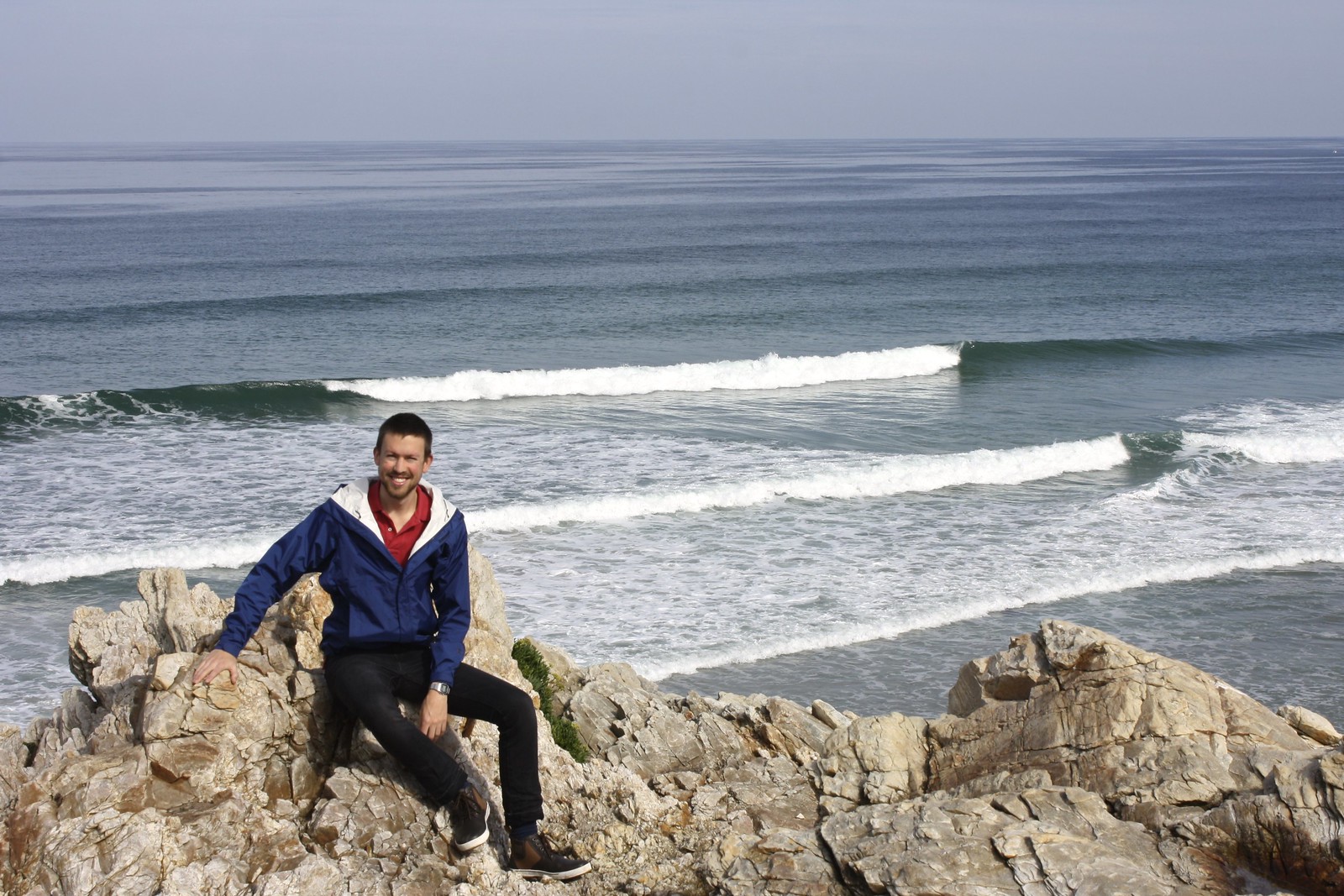 |
| Yours truly and the Bay of Biscay |
I really enjoyed getting to see a glimpse into the Earth’s history via the thousands of strata that make up the cliffs and rock formations. Billions of tides over the years have slowly eroded this section of Spain’s northern coast, revealing rock layers that must stretch back millions of years. Just as a cathedral is moored in a specific historical style, this beach was also anchored to distant, long-gone millennia.
 |
| Years upon years of strata |
But this beach was hardly lifeless. Tiny indigo mussels were snap-crackle-and-popping all along the moist, dripping cliff walls, and barnacles held vigil, waiting for high tide to return. Colonies of percebes or goose-neck barnacles held tight to the slippery rock, and it was exciting to see this Galician seafood delicacy in its natural habitat.
Unfortunately, the tide quickly began its march back to the land, and I almost got stranded on a patch of sand when we decided to head back to the car (I also refused to take off my shoes and get my feet all sandy and wet, but that’s another story). A rare sunny fall day and a fortuitous alignment of the tides had combined to show off this natural wonder’s best face.
How to get there
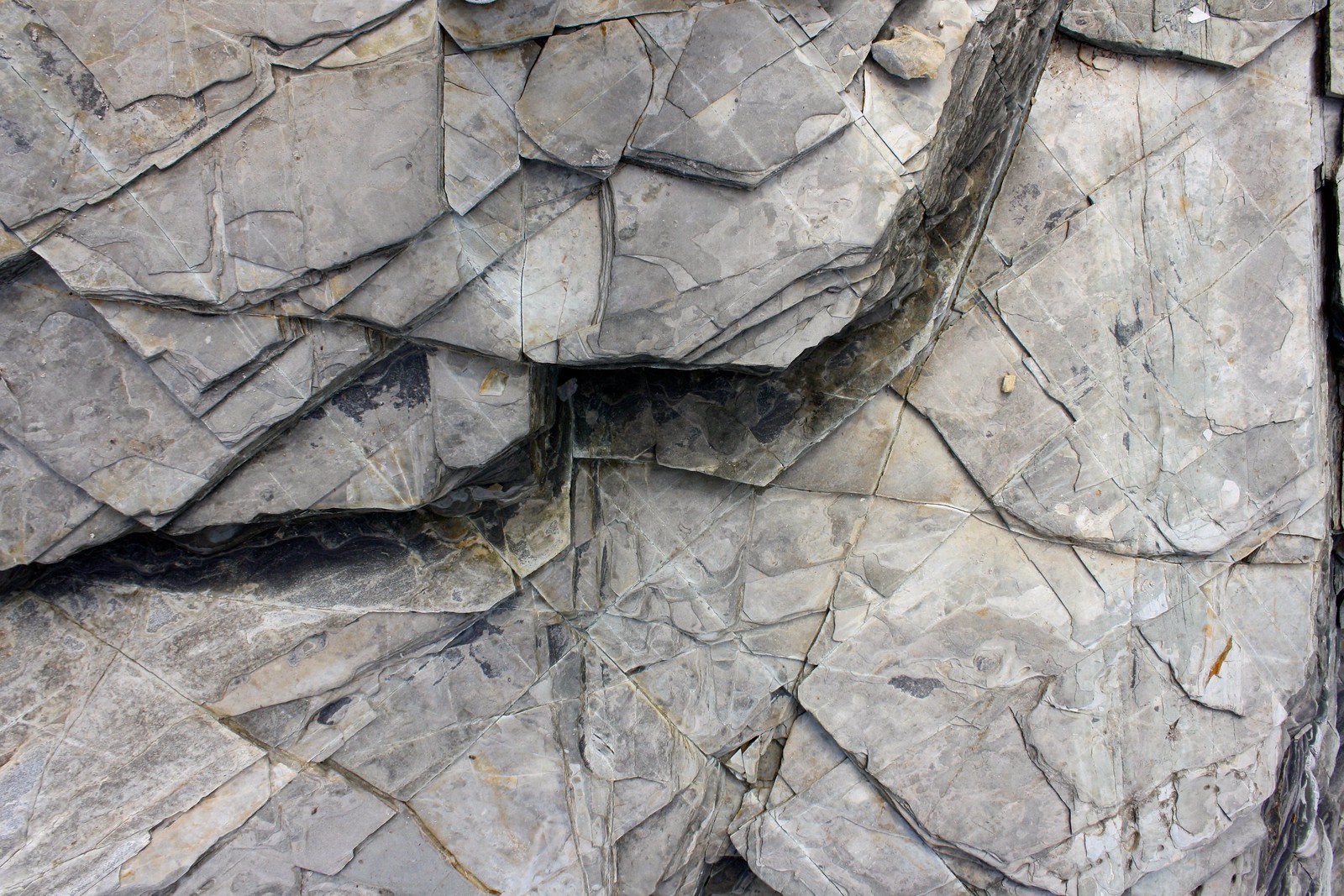 |
| Natural formations that look like postmodern industrial art |
To be honest, Praia das Catedrais is incredibly difficult to get to by public transit, and I’ll admit I actually got here by car with some friends from Santiago. To make matters worse, you’ve always got to keep the tides in mind, as the beach is inaccessible during high tide and sometimes the low tides can occur in the early morning or after the sun has set. I recommend checking the website TabladeMareas.com to figure out when the tides are for Ribadeo, the municipality the beach belongs to. The key words to look for are pleamar (“high tide”) and bajamar (“low tide”).
 |
| Pixelated landscape |
That being said, while it’s still very difficult to make a trip out to Praia das Catedrais without a car (since you have to make sure your visit aligns with low tide), it’s not impossible. A handful of daily buses connect Ribadeo with Lugo and Santiago de Compostela. Check out routes run by Arriva and Alsa for more information. From Ribadeo your best bet is to simply call a taxi and ask the driver to wait while you explore the beach.
 |
| Percebes or goose-neck barnacles, a Galician delicacy in their natural habitat |
Apart from a bus-and-taxi combo, the only other way to get here via public transportation is by riding the Feve, Spain’s narrow-gauge railway that runs along the rugged northern coast. The nearest stop is an apeadero or bare-bones “flag stop” station in Esteiro, one kilometer east of the beach. Four trains make the three-hour journey from Ferrol (northern Galicia) here each day, but there’s only two daily trains from Oviedo, four hours away in Asturias. Look up schedules and prices here.
Have you ever been to the “Cathedrals Beach” before? What other natural wonders of the region of Galicia can you think of? Share what you think in the comments section below!
